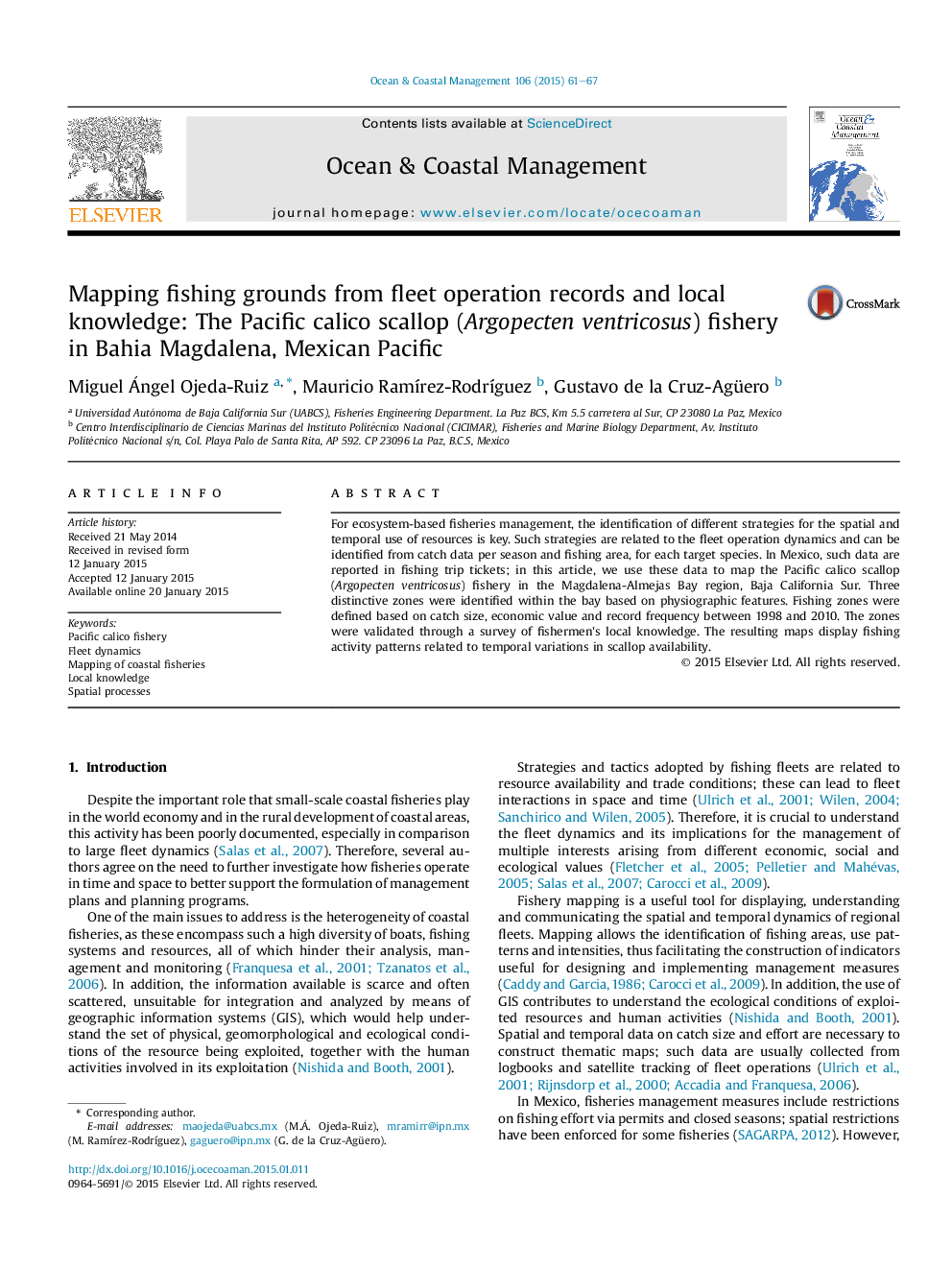| Article ID | Journal | Published Year | Pages | File Type |
|---|---|---|---|---|
| 1723566 | Ocean & Coastal Management | 2015 | 7 Pages |
•Maps were constructed based on fishing trip tickets and local knowledge.•The fishing zones identified agreed with local knowledge.•Thematic maps were produced to display changes in RII over the 1998–2008 period.•The thematic maps showed changes in the use of fishing zones.•Fishery maps can be enriched with environmental, demographic and economic data.
For ecosystem-based fisheries management, the identification of different strategies for the spatial and temporal use of resources is key. Such strategies are related to the fleet operation dynamics and can be identified from catch data per season and fishing area, for each target species. In Mexico, such data are reported in fishing trip tickets; in this article, we use these data to map the Pacific calico scallop (Argopecten ventricosus) fishery in the Magdalena-Almejas Bay region, Baja California Sur. Three distinctive zones were identified within the bay based on physiographic features. Fishing zones were defined based on catch size, economic value and record frequency between 1998 and 2010. The zones were validated through a survey of fishermen's local knowledge. The resulting maps display fishing activity patterns related to temporal variations in scallop availability.
